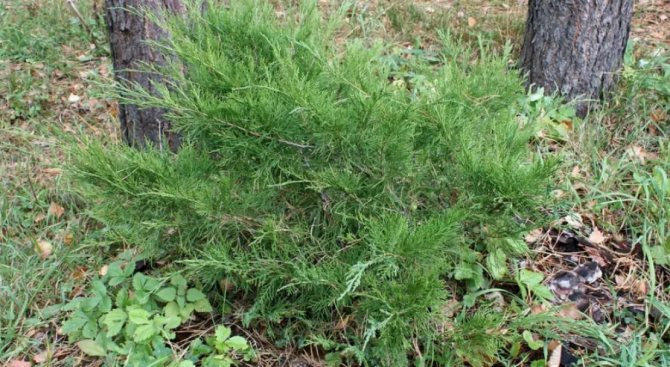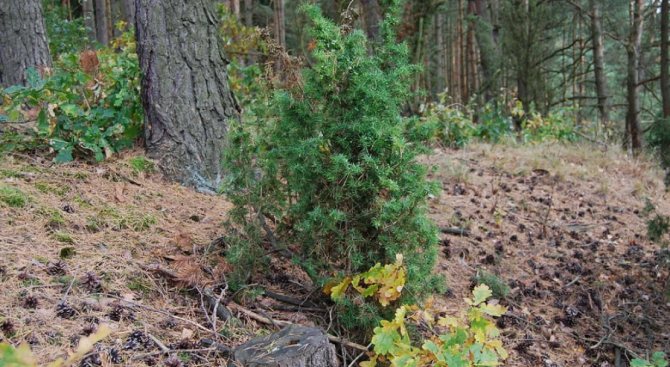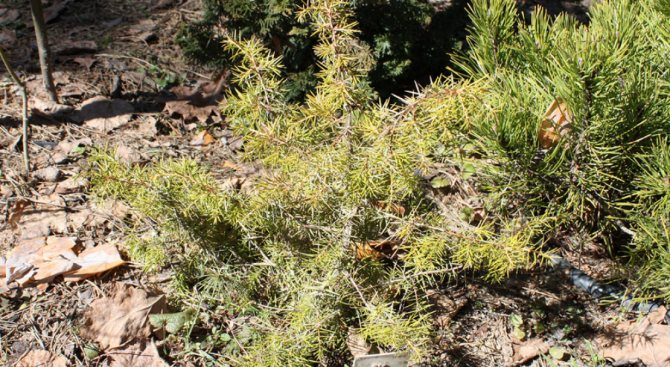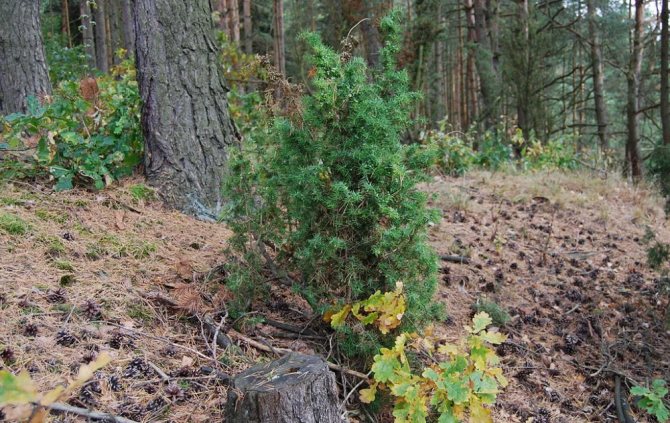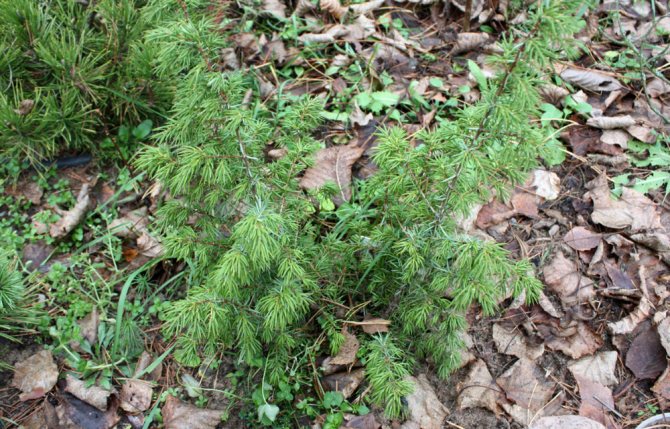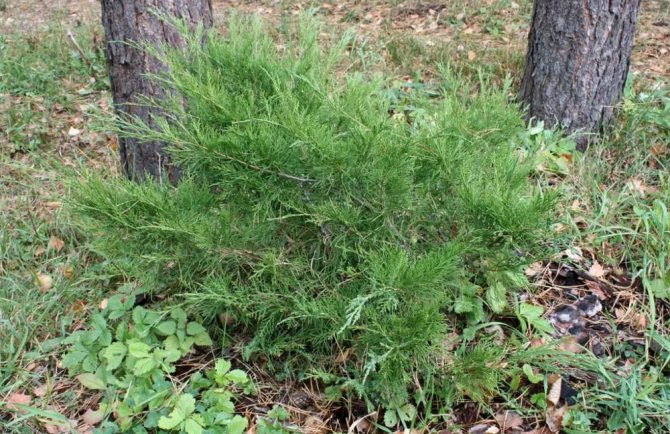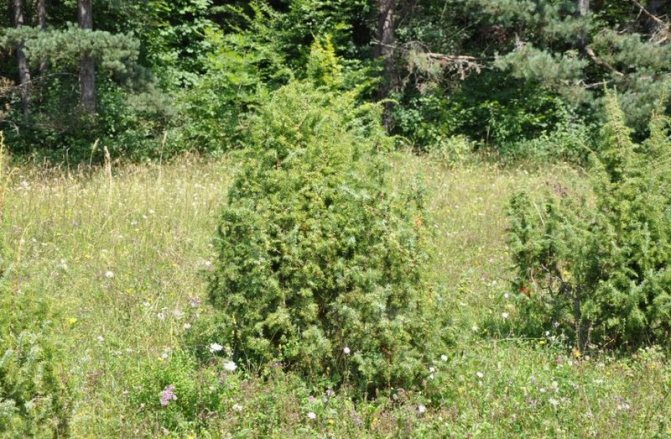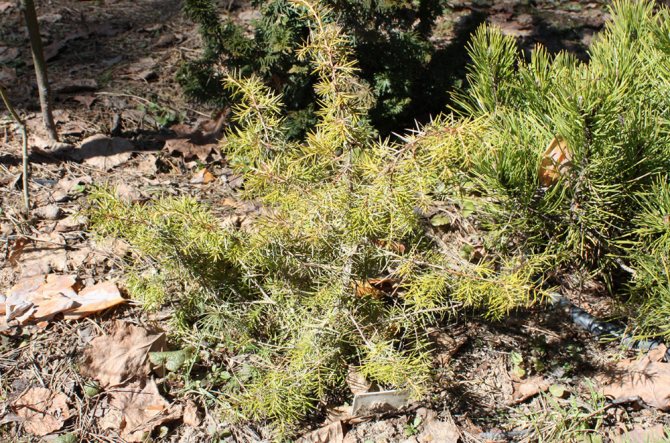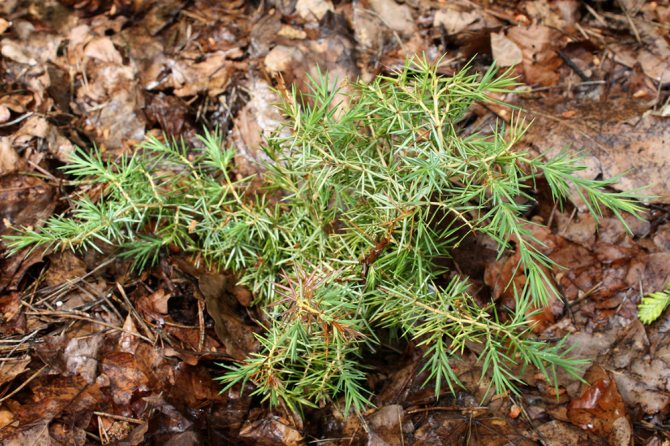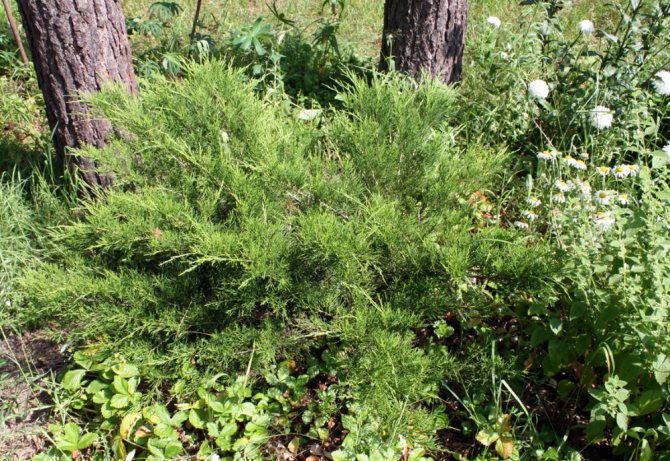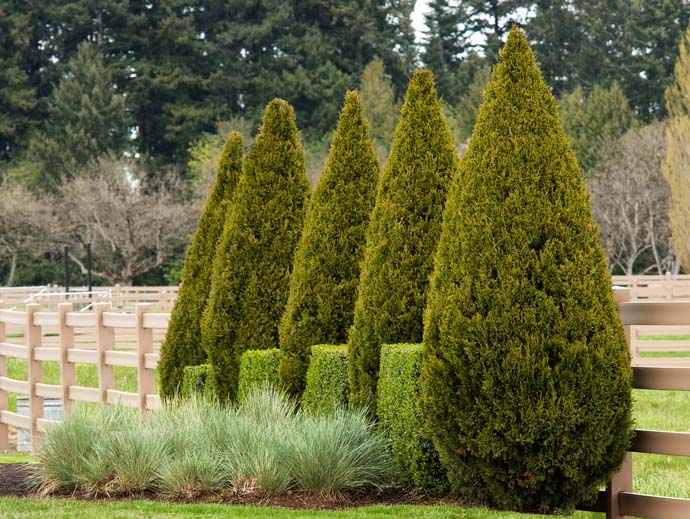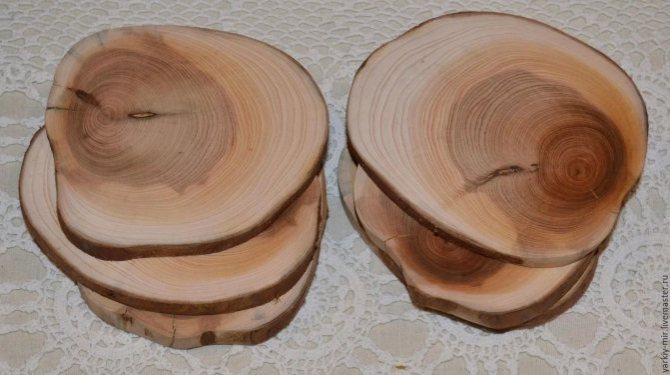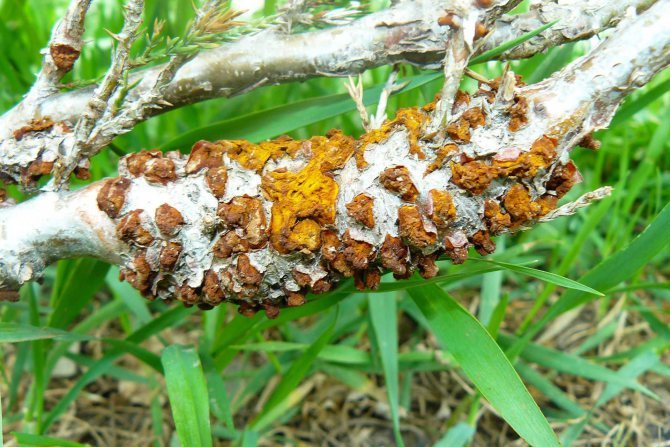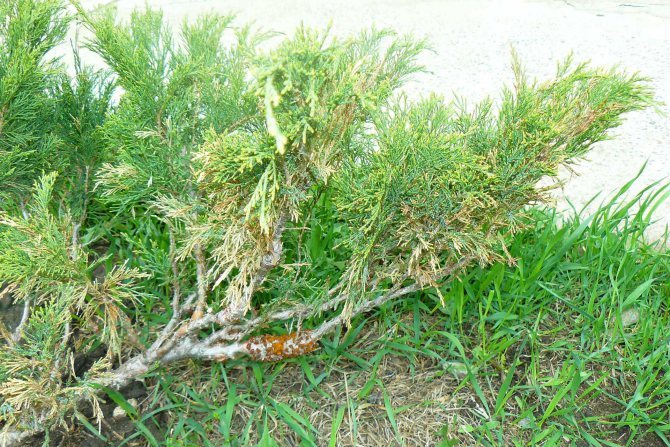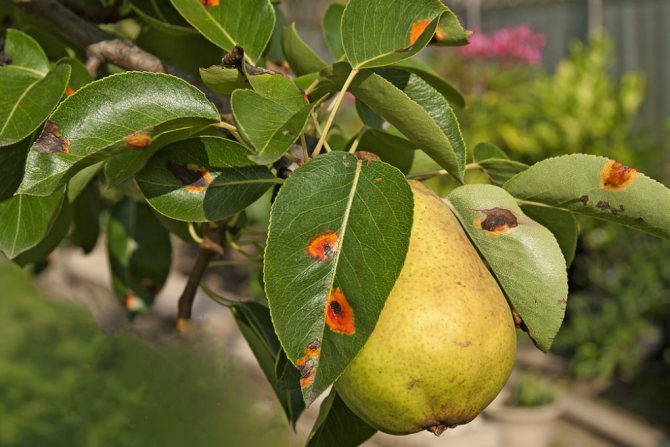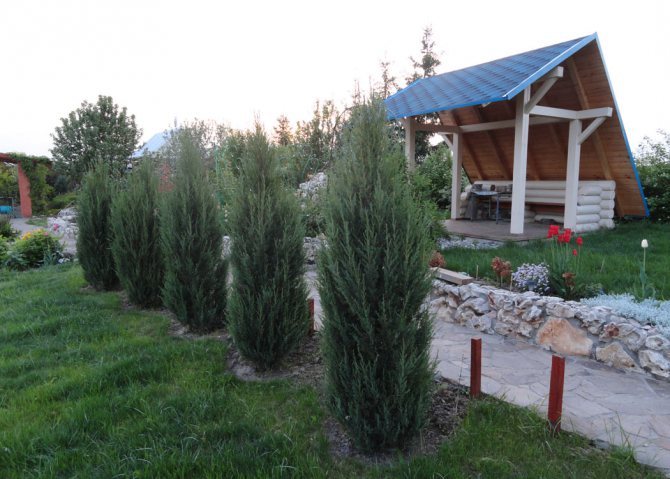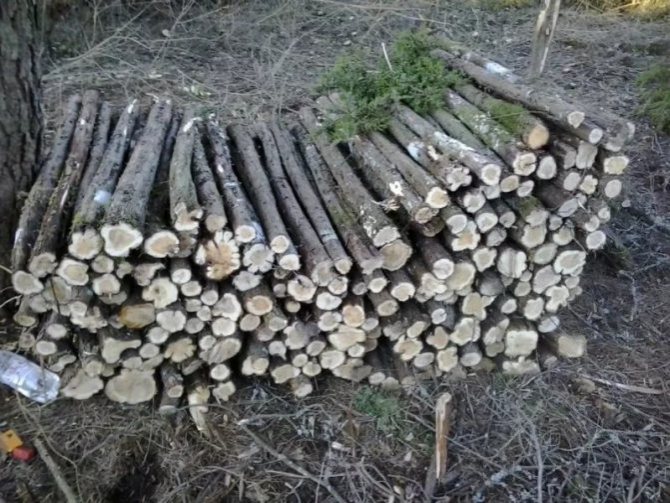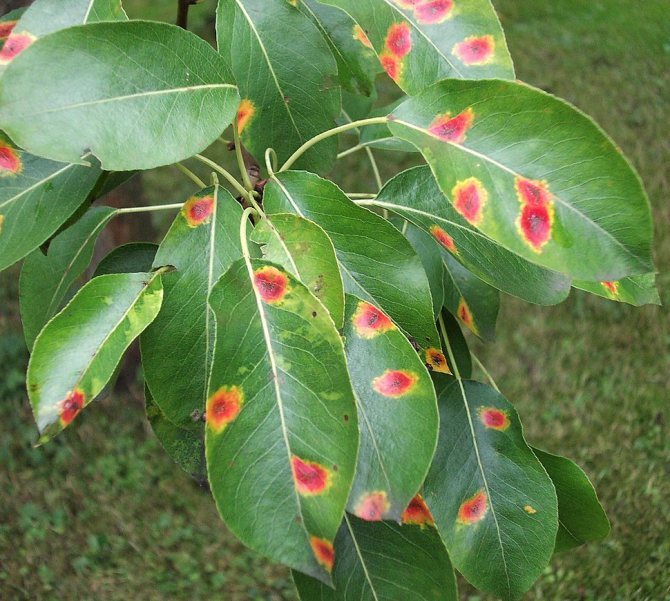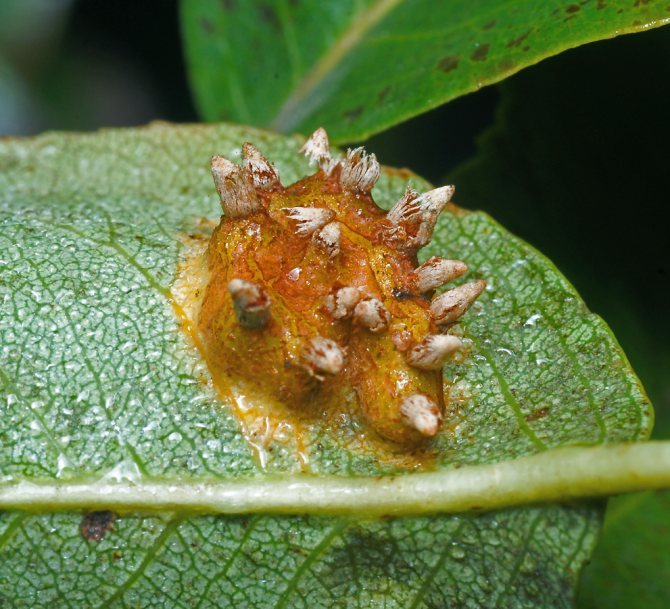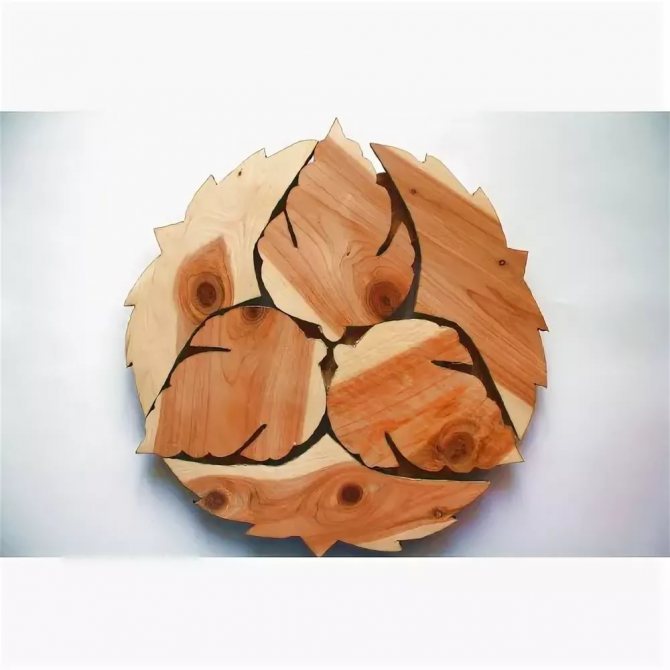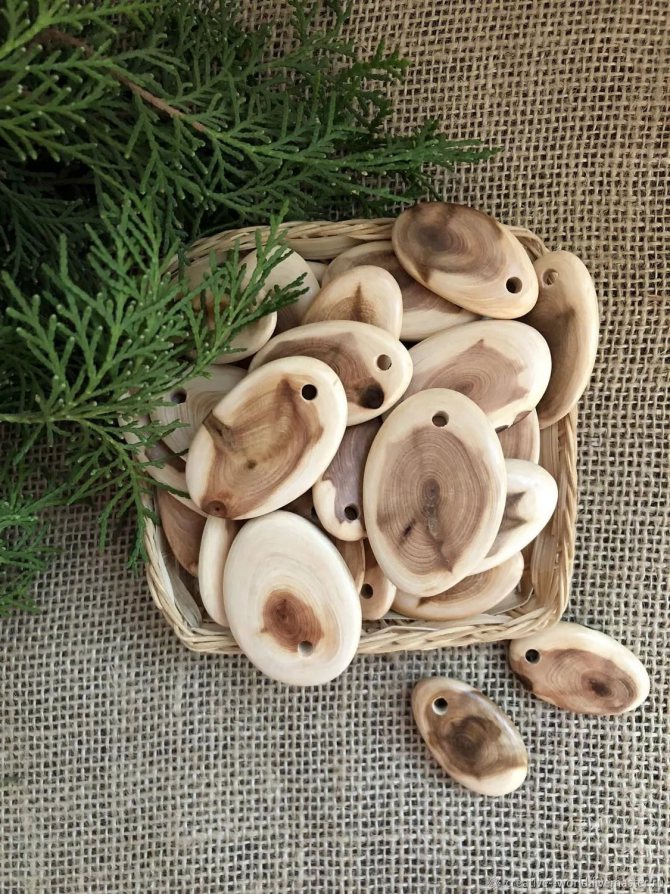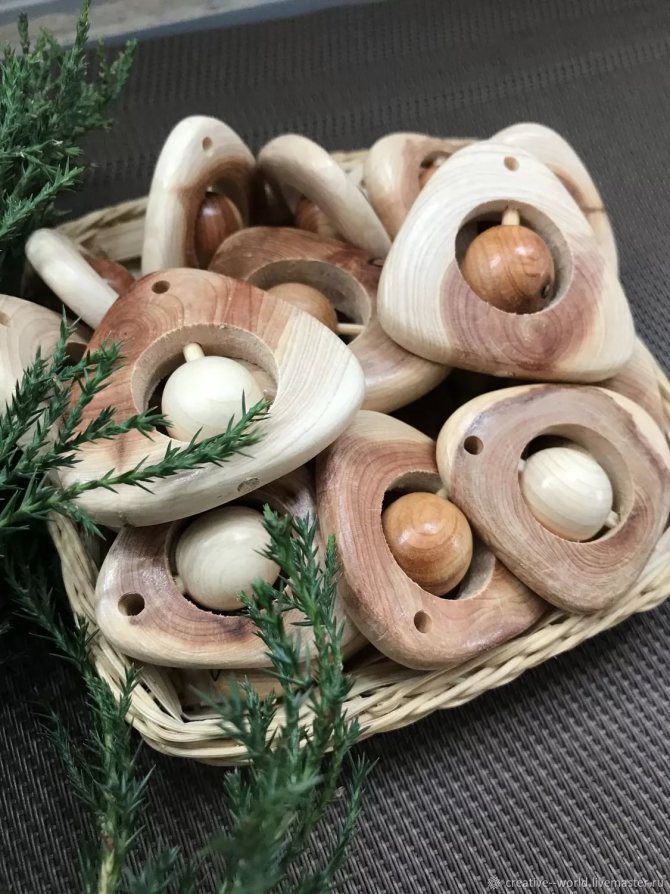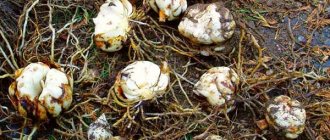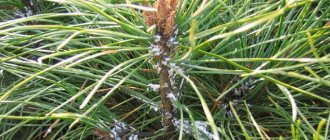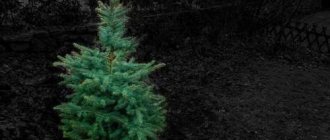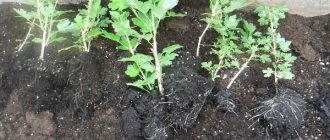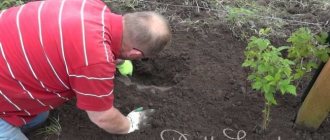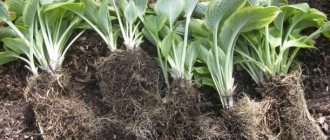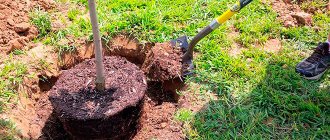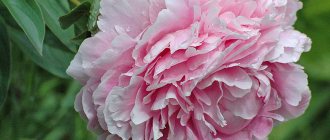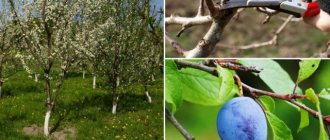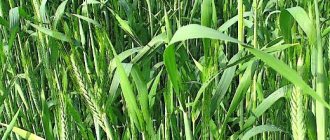Juniper description
More than 70 species of juniper grow in the Northern Hemisphere. The fruits of some of them have medicinal properties. Trees can reach a height of 18 m. There are shrub species. The needles are prickly, each whorl contains 3 needles.
"Flowers" appear in spring, mainly in April. By the fall, pine berries grow in their place. After a year, they become soft, with a bluish bloom. These cone berries contain seeds that are hard-shelled. On each shrub, one-year-old green and two-year-old blue cones with a bitter taste can ripen at the same time.
The roots of the plant are shallow, which is why they often die during forest fires or are damaged by pests. Junipers in the forest can grow on different soils. All of its types differ in a different crown shape, height. Trees are well adapted to trimming and decorative crown changes. The benefit of a haircut is that it is able to improve the health of the branches, fights the disease.
Cones are used in folk medicine as a remedy for many diseases. It gives off a pleasant aroma that protects against pathogenic bacteria. Therefore, it is advisable to breed it in any country or garden economy.
Types and varieties of juniper
According to the encyclopedic resource The Plant List, there are 75 species of junipers in the world, and most of them grow outside our country. In Russia, Ukraine, Belarus and other states on the territory of the former USSR, 9 species of juniper grow:
- Pseudo-Cossack juniper;
- Juniper Virginia (Virginia) - pencil tree;
- Smelly juniper;
- Juniper is high;
- Juniper Cossack;
- Juniper red (prickly);
- Multifruit juniper;
- Common juniper - used in folk medicine. Read about the varieties of common juniper;
- Juniper is hard (hard).
Breeders do not sit idly by, so the number of varieties and varieties of juniper is difficult to describe within the framework of this article. This is much better done by the resources of evergreen nurseries.
Juniper transplant
In order for this plant to take root in the garden or in the country, it must be carefully transplanted. Some plant varieties can be difficult to grow. Therefore, in order for the plant to please the eye near the house, certain tips should be followed.
Site preparation
A properly prepared soil is necessary for the plant. Depending on the species, either alkaline or acidic soil is required. To reduce its acidity at home, add a little slaked lime or dolomite flour. To acidify the soil, peat is introduced into it. It is preferable to mulch it with sawdust.
For the Siberian forest juniper in the garden, you need to choose a sandy soil. The Virginian species prefers loams.
Natural drainage is added to the planting pit, which consists of broken bricks, pebbles and coarse sand. Its thickness should be about 25 cm.
Important! Wild junipers are not allowed to be planted in the open sun. He loves shade or partial shade.The plant is not planted near the apple tree because it promotes the spread of rust disease.
It is forbidden to plant a tree near buildings. This is due to the fact that snow and water fall from them in winter and early spring. They damage the delicate crown.
Planting process
A plant brought from the forest can take root only if all planting rules are observed:
- A wild-growing juniper is transplanted at the end of winter, when the ground has a little more snow. This applies to all plant species.
- While digging out the tree, a ribbon is attached to the side where the sun was shining. On the site, the wild forest juniper must be planted in the same position so that the ribbon shows the direction to the sun. It is better to carry out the transplant process on a sunny day.
- When digging up a tree, you need to save as much land as possible on the root system. Moreover, it should be enough in depth and width.
- It is forbidden to transport the seedling without protection (the earth is wrapped in paper, a bag). If this is not done, then a clod of earth may crumble, and the tree will not take root.
- The juniper is planted in holes or trenches.
- The hole for the tree should be the same size as the clod of earth. Do not bury the root collar of the plant.
- The tree should be planted only in fertile soil. During planting, the roots need to be flattened a little and lightly sprinkled with earth. From above it is sprinkled with a mixture of wet sawdust and pine needles.
- From the soil left during planting, you need to make a small roller around the edges. Inside, you need to pour 2 buckets of water and another bucket with a heteroauxin tablet.
Important! How the juniper is looked after depends on how it will take root in a new place.
Is it possible to buy a tree
You can buy it dug out or in a pot. Such a plant should be planted in spring or autumn. If the tree was in the container, then planting is carried out at any time of the year. Only young seedlings are suitable for transplanting - old trees will not take root well in a garden.
This plant does not require serious maintenance.
At the same time, simple rules must be followed:
- in the spring you need to feed the plant;
- the circle near the trunk must be kept clean, weed and mulched;
- mulch is placed on geotextile;
- in winter, the crown is tied with twine, because snowballs can ruin the appearance of the plant;
- varieties with blue needles should be protected from the sun by covering the plant with an opaque material;
- it is necessary to prune the plant in a timely manner and remove dead branches (so new ones will begin to grow faster;
- young branches must be protected from frost.
Young plants need watering. Adults tolerate drought conditions well. Plants should be watered up to 3 times a month. In the heat, they are sprayed 1 time within 10 days. About 1-3 buckets of water go to the tree for irrigation.
Experienced gardeners recommend paying special attention to the plant for six months after planting. All this time, the tree should be watered in a timely manner, and weeds, which are the source of diseases, should be eliminated.
Pruning a plant is carried out in case you need to make a green hedge out of it. In other cases, trimming is not carried out. When pruning, you must be extremely careful not to remove excess shoots - it will take a very long time to recover. It is necessary to carry out sanitary pruning, it does not damage the crown of the plant and does not cause further diseases.
How to care for a forest juniper
Forest juniper does not need complicated care. Timely execution of such procedures will be sufficient:
- watering;
- top dressing;
- loosening the soil in the near-trunk circle;
- mulching;
- pruning;
- frost protection.
Trees need special attention for 6 months after transplanting. During this period, they need regular watering.It is also necessary to remove weeds in a timely manner, as they can provoke the development of various diseases.
Watering and feeding schedule
Mature trees and shrubs can easily tolerate drought, while young ones need regular watering. It is recommended to water the forest cypress at least once every 10 days. Water consumption for one root is 10-30 liters. In the hot season, it is recommended to spray the plants 1 time per decade. In the spring, the forest juniper needs additional fertilizing.
Loosening and mulching of the soil
The trunk circle must be kept clean by timely removal of weeds. Also, the soil around the forest juniper needs mulching. Mulch helps retain moisture and inhibits weed growth. Mulching must be carried out immediately after planting.
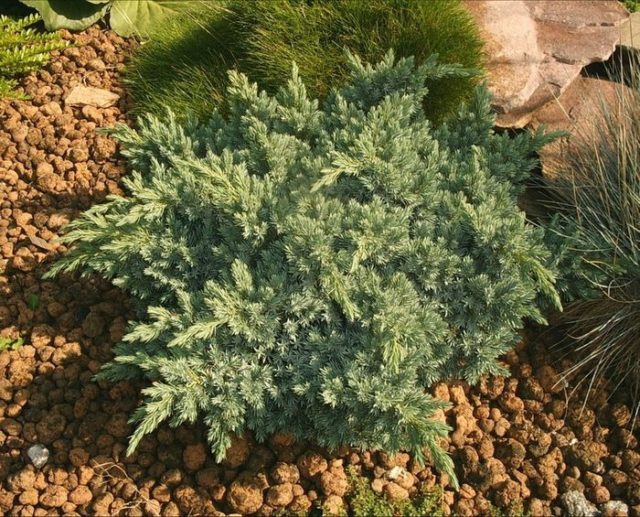
You can use sawdust, cut grass, peat as mulch.
Pruning rules
Forest juniper is cut off only when creating a hedge from it. In other cases, plants only need sanitary pruning. This procedure does not lead to severe damage to the crown and does not provoke the development of diseases. It is necessary to prune the forest juniper with caution, since the plant is recovering for a rather long time.
Preparing for winter
Young forest juniper seedlings need shelter for the winter in the first year after planting, regardless of what time of the year the seedling was transplanted. To do this, first of all, the mulching layer is increased by an average of 15 cm. Then the branches are collected in a bunch and fixed so that they are not damaged under the weight of the snow cover. Arcs are installed on top and a film is pulled over them. If the seedling is quite tall, then it is simply wrapped with covering material or covered with branches of coniferous trees.
Juniper in the suburbs
This tree grows in many forests of the Moscow region. You can dig up and transplant forest junipers in the Moscow region in all areas of the region.
Juniper in the suburbs
Juniper in the Moscow region tolerates winter conditions well. If young trees are dug, then for the winter they need to be covered with spruce branches.
In the Moscow region, you can transplant a juniper in the Urals in the forest. Conditions for its growth will be favorable in the Moscow region, especially in mild winters. All Siberian and Ural varieties take root well in central Russia, with proper care they are not affected by dangerous pests.
The main varieties for growing in the garden
Juniperus virginiana is an ornamental tree native to Canada and the United States. Sometimes it can grow up to 30 meters, but only at home. In Russia, the virginian juniper does not reach a height of more than 6 meters.
Common juniper is a tree-like variety that can be in the form of a tall tree (up to 12 meters) or a spreading shrub (up to 2 meters). He is the most unpretentious species, and therefore the most common.
Juniper Daurian - it is characterized by stretching and creeping shoots, 2-3 meters long. Resistant to frost and does not require additional maintenance.
Juniper Cossack - has the shape of a creeping bush, with a height of 1.5-2 meters. A distinctive feature of this species is the pungent smell and toxicity of some varieties.
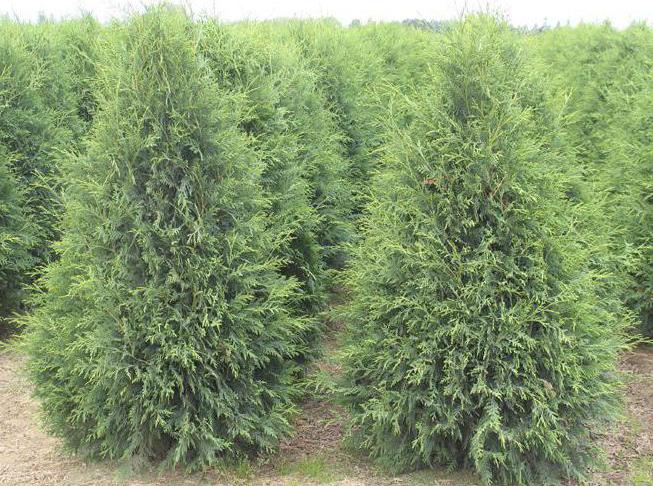

The horizontal juniper is an evergreen shrub that grows well near artificial ponds and reservoirs. Has a short height - 15-30 centimeters. Perfectly acclimatized in any region of the country.
Rocky juniper - in its natural environment it reaches 15 meters. The cultivated varieties are somewhat lower. It has a conical crown and blue-gray or dark green needles.
Diseases and pests
This plant can suffer from such diseases and pests:
- Rust. With her, the needles acquire a yellow tint. It is treated with Arsedir solution.
- Schütte's disease.
- Gray mold is harmful to young shoots.
- Juniper moth. It is treated with the drug Decis.
- Spider mite (you can get rid of it with the help of the Karate preparation).
- Shield.
- Aphids (affects young shoots, to get rid of the disease, the plant should be sprayed with Fitoverm).
Juniper is a real forest decoration for a garden or summer cottage. It is very easy to care for the plant, it is resistant to diseases. Some of its types are effective medicine against many diseases.
Planting conifers is often used for garden decoration and decoration of your own plot. These are very capricious pets, which not every gardener can grow. A good alternative to purchasing ready-made seedlings is to plant a forest juniper. In order for a forest juniper to take root in the garden, it is necessary to take into account many important nuances of its cultivation.
How to decorate a garden beautifully with juniper
Junipers are widely used in landscape design due to their high decorative effect. The most interesting thing is that they are able to decorate any part of a private house or a summer cottage when used in completely different ways. There are a lot of ideas for using ephedra, here are the most popular and interesting:
- Alpine slide. Ephedra are very often used to create rock gardens. As a rule, for such cases, specimens of compact varieties are chosen.
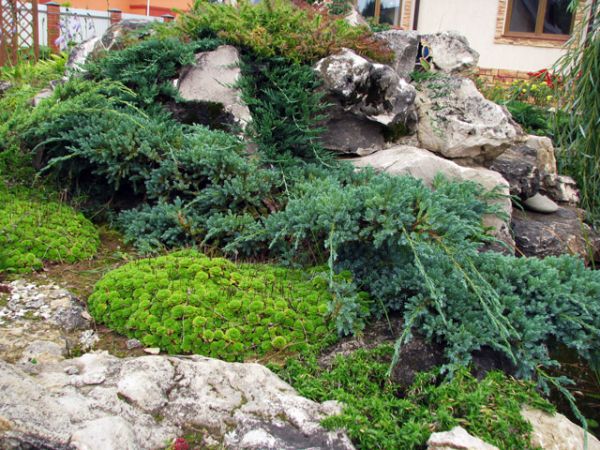

- Rockery. A bright representative of the cypress family can become the highlight of the rock garden. Both tall and short shrubs can be used.
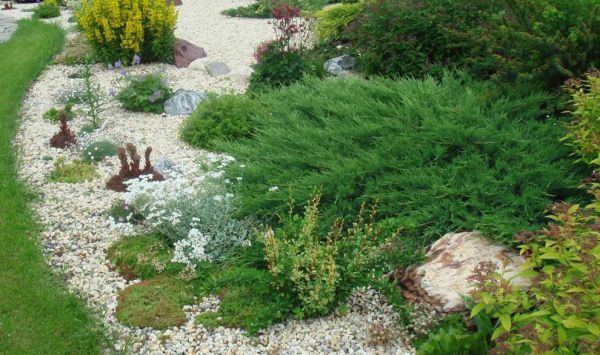

- Coniferous garden or mixborder. This method of garden design is ideal for ardent lovers of evergreen conifers. Neighborhood "brothers" not only transforms your garden, but also improves the microclimate, makes the air cleaner and more fragrant.
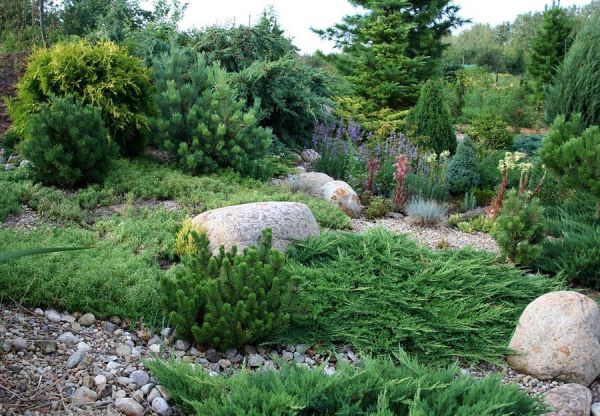

- Border landings. Low-growing varieties and types of shrubs are very cute and practical to use for planting along curbs.
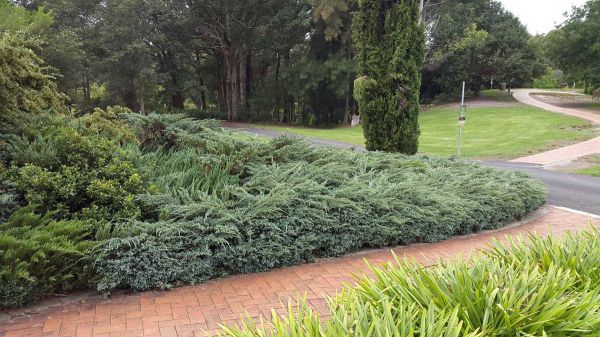

- Hedge. Tall species are great for creating a hedge. A shrub for these purposes can be planted around the perimeter of the site, or the site can be divided into some locations, for example, to designate a flower garden or a recreation area.
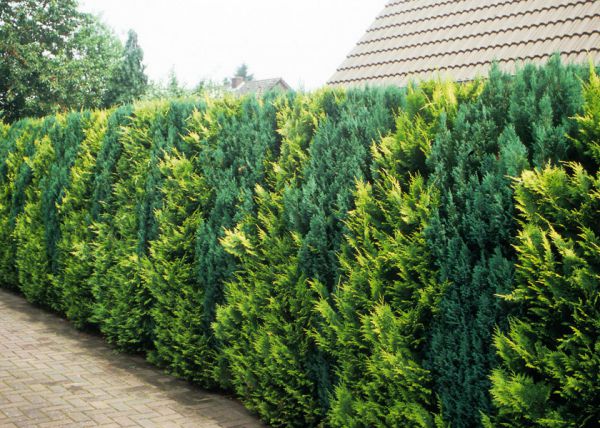

- By the reservoir. If you have an artificial pond on your site, then you definitely need to decorate it with a juniper! This tandem looks especially impressive with large stones. The pond and shrubs will complement each other favorably, besides, moisture will emphasize and refresh the wonderful coniferous aroma of the plant.
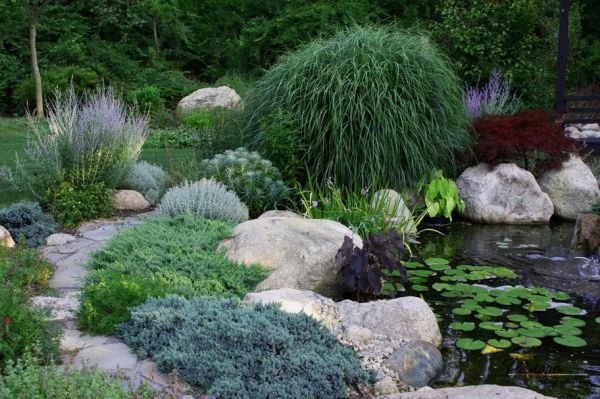

- Single landings. The easiest option, you just need to plant a seedling without worrying about the distance between the bushes. In addition, it is easier to care for one bush than several at once.
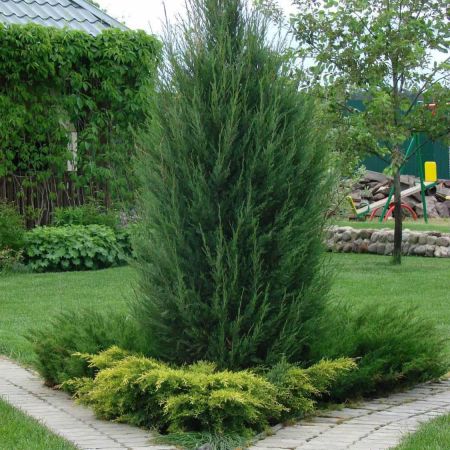

By the way! Among junipers, you can find many species that differ in shape and appearance: columnar, tree-like, shrub, undersized (including creeping on the ground, ground cover).
The most popular plant species in Russia: Common juniper, Cossack, Virginian. And also there are Rocky, Scaly, Horizontal.
How to properly dig a seedling
In their natural habitat, forest plants have a lot of competition. That is why, adult juniper bushes have already managed to win their "place in the sun", which means they simply will not survive the transplant. To ensure yourself at least a small chance of success, it is advisable to look after a small bush. They dig it out very carefully, together with a large clod of earth on the bayonet of the shovel. It is worth noting the location of the top relative to the sun. It is advisable to transport the bush in a plastic bag, tightly fixing it with the top.
In addition to its high decorative value, forest juniper also boasts medicinal and disinfecting properties. It perfectly drives away pests, freshens the air and destroys harmful viruses and bacteria.That is why it will be easy to breathe next to him, the mood will improve and even the headache will pass. Such a healer plant should definitely appear in your garden!
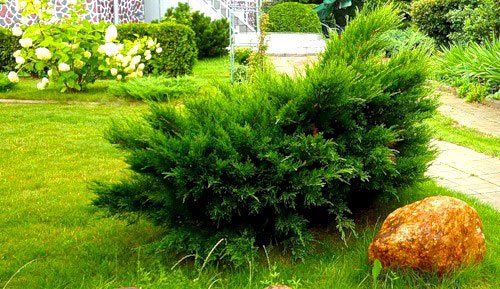

Step-by-step instruction
Preparatory work will help to carry out a juniper transplant with high quality and will eliminate various problems.
- Around the tree selected for placement in another place, a sharp shovel is thinned the ground to its length (50 cm), this must be done 12 months before the procedure.
- The planting hole is prepared 2 weeks prior to placement. The potting mix is usually made from sand, peat and turf with the addition of dolomite flour or lime. Some varieties require organic fertilizers and compost.
- For a small seedling, a hole with dimensions of 50 × 50 × 50 cm is needed, but if the juniper is large, then they are guided by an earthen clod - the hole should exceed it by 2-3 times.
- At the bottom, a drainage layer of pebbles, crushed stone or sand with broken brick 15 cm high is laid out.
- A layer of soil mixture of 8-10 cm is placed on the drainage. You can add to it the upper soil layer of the forest litter, on which forest junipers grow.
How is the landing
Another secret to success is moving quickly to a new location. To do this, it is advisable to prepare a well with a fertile mixture in advance. For this, sod land, sand and humus are mixed. The reaction of the soil should be slightly acidic; it is imperative to make good drainage at the bottom. Despite the fact that in the wild, juniper grows well in swampy areas, it is better to replace such extreme with frequent watering in the garden.
The nuances of proper fit and care:
- The depth of the planting hole should match the height of the earthen coma. The root collar of the plant should be level with the ground. It is also worth considering the location of the bush relative to the sun, as it grew before.
- It is advisable to provide a landing site in the shade or partial shade, but away from tall buildings. The optimal neighborhood will be provided by tall perennials, berry bushes and undersized trees.
- It is better to plant junipers in trenches at some distance from each other. Subsequently, the plants will grow, occupying new territories, which must also be foreseen in advance.
- After planting, the trunk circle is mulched with needles and sawdust.
- For better rooting, the first days the plant is watered with stimulating solutions.
- It is imperative to make a hole around the trunk for watering. For each bush at a time, use one and a half to two buckets of water, preferably slightly acidified. The size of the hole is periodically expanded so that the plant receives enough moisture for active growth.
- A winter shelter for a juniper is constructed from branches, leaves and needles. With the onset of heat, the protection is removed, and the plant is actively watered throughout the growing season.
- It is necessary to cut off shoots only from the third year of life. Carry out the procedure in early spring, removing dried and broken off branches from the bush. In addition, garden compositions can be formed from juniper, but excessive pruning can disrupt growth, so do not get carried away.
You can clearly see the process of planting a forest juniper in the proposed video.
It is not so easy to provide sufficient care for a forest juniper at home. To do this, it is necessary to regularly carry out abundant watering, inspect and treat the plant from diseases and pests. It should be noted that forest juniper can become a source of rust infection of apple trees, so it would be a big mistake to place these plants in close proximity to each other.
Planting a forest juniper is not an easy undertaking. This plant is quite capricious and can hardly endure a change of place of "residence". Having dug a plant in the forest, it is imperative to orient it in a new place according to the sun, and also to provide conditions as close as possible to its usual conditions.The features of growing juniper planted from the forest are discussed in our article.


An evergreen plant from the Cypress family in the wild is represented by several species, differing in habit and height. The forest juniper is widespread in the Asian and European parts of Russia, grows in the undergrowth of coniferous and larch forests.
Choosing the right place
For transplanting, you will have to choose an area where the plant will feel comfortable, and it will not need to be injured once again by new movements.
- The choice of location depends on the type of juniper. If the plant grows in its natural environment on the slopes of the mountains, then an open hill with good lighting will be suitable for it. But since young plants are mainly transplanted, even sun-loving conifers will not be disturbed by a little shading.
- Likewise, depending on the variety, you need to select a suitable soil for the culture. Some varieties of juniper prefer clay and sandy loam soil, while others prefer soil with a high lime content. When creating a decorative group from different species, it is important that the same land is suitable for everyone, otherwise caring for them will be difficult.
- It is better not to plant junipers next to such garden crops as pear and apple trees, as fruit trees can get rusty.
- For landscape ensembles, a spacious place is chosen, taking into account the fact that the plant grows strongly in width, especially its undersized varieties.
For creeping plants growing in nature on stony soils, you can create flower beds and hills, covering the area with pebbles and gravel.
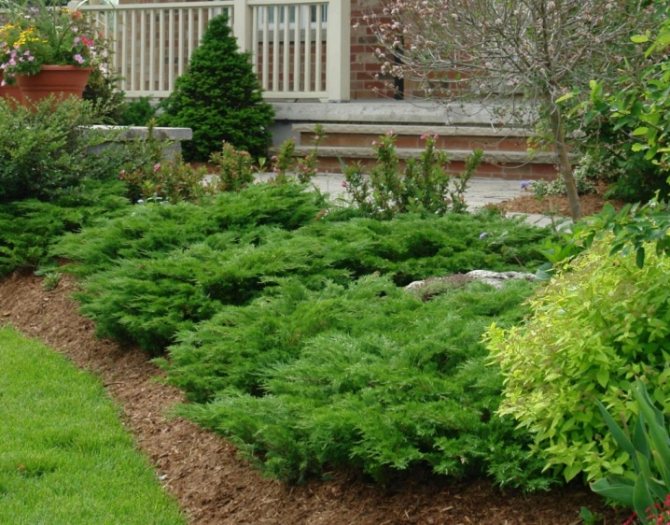

How to properly dig a seedling
In their natural habitat, forest plants have a lot of competition. That is why, adult juniper bushes have already managed to win their "place in the sun", which means they simply will not survive the transplant. To ensure yourself at least a small chance of success, it is advisable to look after a small bush. They dig it out very carefully, together with a large clod of earth on the bayonet of the shovel. It is worth noting the location of the apex relative to the sun. It is advisable to transport the bush in a plastic bag, tightly fixing it with the top.
In addition to its high decorative value, forest juniper also boasts medicinal and disinfecting properties. It perfectly drives away pests, freshens the air and destroys harmful viruses and bacteria. That is why it will be easy to breathe next to him, the mood will improve and even the headache will pass. Such a healer plant should definitely appear in your garden!
Juniper spherical. Juniper (Juniperus) cypress family
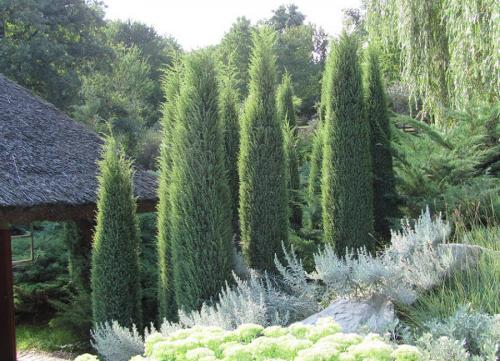

The genus juniper is represented by small evergreen plants - trees (10-12 m high, rarely up to 30 m) high, low, and creeping ground cover shrubs. For the genus juniper, it is characteristic that the needles of all young plants are acicular, and in adults of different species they can be either acicular or scaly. Acicular prickly. Scaly small, pressed against shoots, opposite in pairs or, less often, in three-link whorls.
An extensive genus, there are over 70 species native to the northern hemisphere.
Junipers are light-requiring, drought-resistant, frost-hardy and undemanding to soil conditions. Their powerful roots, penetrating deep into the soil and extending tens of meters underground in all directions, are able to extract water and nutrients from the poorest soils. Therefore, the juniper grows on the saline sands of the sea coasts (coastal juniper) and in mountain deserts (Chinese juniper) in mossy swamps among the coniferous forests of the North (common juniper) and on calcareous soils in the mountains.Some types of junipers inhabit the mountain slopes from their foot to the very peaks, climbing to an altitude of 4000 m, others easily tolerate the harsh conditions of polar snows in the Arctic zone. Many junipers are characteristic inhabitants of rocky slopes and cliffs. Central Asian junipers growing in the mountains feel comfortable at temperatures from +40 to -30 ° C.
The most characteristic biological features of all junipers, in addition to their pronounced love of light and the surface occurrence of lateral roots, include extremely slow growth even under optimal conditions of existence. Junipers are distinguished by enviable longevity. Very often in the mountains you can find "honorable elders" with thick twisted trunks and ugly curved branches - trees 800-1000 years old, which still give growth and many cones with benign seeds.
Juniper is a plant that is also unique in that it releases 6 times more phytoncides than other conifers and 15 times more than deciduous species. Junipers have a unique property, they purify and heal the air. In juniper forests it is very easy and free to breathe. Juniper has a purposeful healing effect on the body.
The juniper fruit is a juicy cone. This is the main distinguishing feature of the genus. It has a spherical or somewhat elongated shape and, when mature, looks like a berry-like formation, which in everyday life is called a cone berry or even a juniper berry. The cones of some juniper species mature within three years of pollination. By the end of the first year, they reach their final size, but are still green. By the end of the summer of the second year, they become soft, blue-black or maroon with a bluish waxy bloom. Depending on the type of juniper, the cone may contain from one to 12 seeds. Mature seeds are brown, hard, and easily detach from the resinous soft bud. Ripening of ripe cones begins at the end of summer and continues until late autumn. Until the seeds are free from the pulp of the cones, they do not germinate, but they remain viable for a long time. Bees feast on the pulp of cones, piercing the skin, which contributes to their faster ripening.
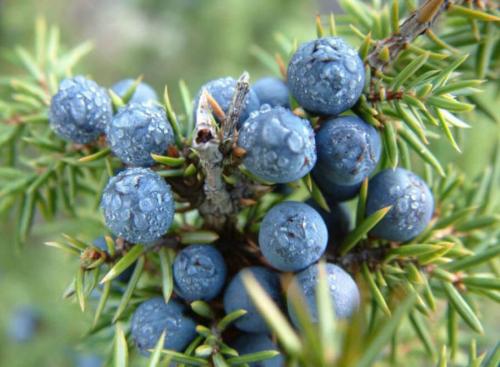

The fruits of the juniper berry-like cones have medicinal properties, but they are edible and are used for medicinal purposes, exclusively the fruits of the "common juniper"! The other types of juniper cones are considered mildly poisonous or poisonous, so it is better not to experiment with them.
The common juniper is the most common type, the fruits of the cones are fleshy, juicy, large, about 6-9 ml. Cone berries are eaten raw and dried, ripe pine berries are bluish-purple in color, with a brownish-greenish pulp, with a tart, aromatic, spicy taste. With the use of juniper cones, the mouth, stomach is cleared of bacteria, digestion improves, and the blood composition improves.
Dried berries are harvested in autumn, ripe violet-blue berries are harvested and dried at temperatures no higher than 30 ° C, dried berries are used for medicinal purposes, have bactericidal and phytoncidal properties. They are used in cooking as spices and add a specific flavor to dishes. Tinctures, syrups, decoctions are made from dried juniper berries, tea is brewed, juniper tea is an excellent remedy for combating diseases of the upper respiratory tract and an expectorant. Juniper tea: for one glass of boiling water, a tablespoon of dried juniper berries, infused for half an hour and taken, a third of a glass, three times a day. If you use juniper fruits for medicinal purposes, you should remember that they can only be used with normal functioning of the digestive system, in case of exacerbation of the stomach, liver, kidneys,in no case should you use juniper berries, because they can lead to bad consequences. Not only the berries, but also the rest of the juniper, twigs, needles, are medicinal and are used for medicinal purposes, but they are slightly poisonous or poisonous, you do not need to experiment on your own at home.
Is it possible to plant a juniper from the forest in the country
Common forest juniper has several varieties, they belong to shrubby and tall tree-like species. They have a decorative crown, fruits with a high concentration of essential oils are suitable for culinary and medicinal purposes. Juniper grows in the forest in place of clearings, in the undergrowth. Occurs on the slopes of mountain ranges. Feels comfortable in open areas and in partial shade.
Due to its exotic appearance, it is used for landscaping urban recreation areas and decorating the backyard landscape. Hybrid species adapted to the conditions of a certain climatic zone are in great demand. You can transplant a forest juniper to your dacha when creating conditions close to the natural environment. Initially determined with a choice, high-growing varieties reach up to 5 m in height, other shrubs are lower, but they have a voluminous crown. The plant is transplanted at a certain time of the year, the recommendations for transfer are followed.
Elderberry red - an inedible berry
Elder - herbaceous, shrubby, woody plants growing in the temperate and subtropical zones. There are about 40 types. 11 species grow in Russia, in particular Siberian red elderberry - a medicinal and ornamental plant. It is a shrub with a height of 1.5 to 5 m. They are found in thin, coniferous and mixed forests with sufficiently moist soil, along the edges, shady slopes of ravines and river banks. The bark of the branches is grayish-brown. Leaves are opposite, unequally pinnate, compound, with 2-3 pairs of leaflets. In spring, the leaves take on a purple hue due to the increased content of anthocyanin. The flowers are small, at first greenish, later yellowish-white, collected in large panicle inflorescences, sticking up.
Red elderberries are inedible
The fruits of red elderberry are bright red, fleshy in the form of berries with fleshy flesh and yellowish seeds. Leaves, bark and flowers have an unpleasant odor, and berries taste unpleasant. The berries are not poisonous, but they are not suitable for human food, although they are readily eaten by birds.
Elderberry red as a medicinal plant
In official medicine, elderberry has not yet found use, but in folk medicine it is used to obtain an analgesic, diaphoretic, antitussive, emetic, diuretic, laxative effect.
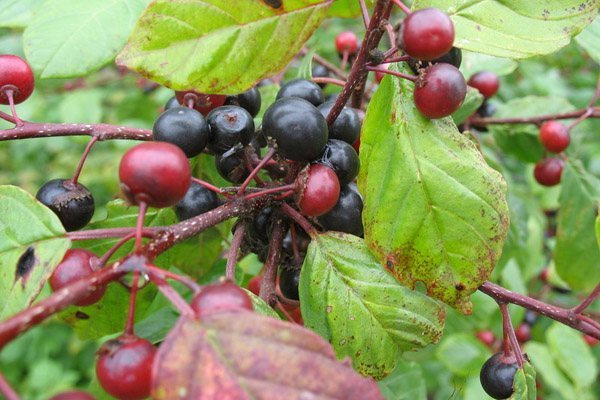

Buckthorn berries are inedible, but buckthorn bark has medicinal properties
When to replant junipers from the forest
Common juniper grows slowly, tolerates pruning calmly, looks good on the site, like a tapeworm and hedge. The culture has a lot of advantages, but there is a serious minus, the forest representative of Cypress takes root poorly after transfer. The slightest violation of the recommendations during transplantation can lead to the death of the plant.
A forest seedling is taken no older than 3 years of age and no higher than 1 m. The work is carried out when the ephedra has not entered the active phase of the growing season. Planting junipers from the forest in spring is the best option for regions with cold winters. The work is carried out when the snow has partially melted, and the ground has thawed enough to dig out the seedling. In the summer, it is not recommended to transfer the forest juniper to the site. The culture is not stress-resistant, rooting is painful, the plant loses a lot of moisture and, as a rule, transplanted in summer, forest juniper does not take root in a new place.
For the central strip, in addition to spring, forest juniper can be planted in autumn.Work is carried out at the end of September, when sap flow slows down and the plant enters a dormant phase.
Important! The culture is frost-resistant, before the onset of cold weather it will have time to take root and successfully overwinter.
Possible problems
After transplantation, a juniper that has not yet had time to root normally can be affected by aphids, scabbard and spider mites. Moreover, poor drainage and water on the crown can lead to fungal diseases of the plant. That is why it is important, after moving to another place, to carry out preventive work to prevent these troubles.
It is often possible to observe how the needles of a juniper turn yellow after transplanting, especially the one that is closer to the trunk, in the middle of the crown. This can mean a lack of moisture, so care must be taken that the soil surface under the tree does not turn into a dry crust. But also the same diseases and harmful insects are the cause of yellowing.
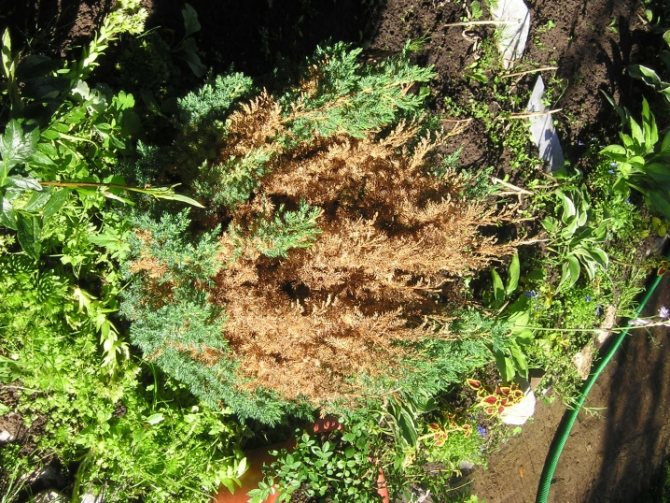

The fight against them should be started when the first signs of trouble appear and alternate between different means, since pathogens often develop resistance to the same drugs. The affected branches must be removed, and the sections must be treated with garden varnish or copper sulfate.
The transplant process is, of course, important and must be carried out according to all the rules, but for the adaptation of a juniper in a new place, proper care of the plant is of great importance.
How to properly transplant a juniper, see below.
Juniper is common in household plots. The decorative look allows it to be used in landscaping. But few gardeners know how to transplant a juniper so that it does not dry out and die. This unpretentious culture is very sensitive when the integrity of its root system is violated.
Buying an evergreen tree, propagating it
It is not recommended to buy or replant an adult tree. It will be quite difficult for him to settle down; certain skills and a number of knowledge are also required. You can buy juniper in 2 types:
- In the dug out. Its roots are wrapped in wet sackcloth.
- In a pot.
Basically, the plant is grown in the open field, and only before selling it is settled in containers.
A tree is planted in the spring (April or May) - this is the most optimal period. It is possible in the fall. If the plant was purchased in a container, its root system is formed and protected, so it can be planted at any time.
A tree planted in the shade can lose its spectacular appearance and begin to wither. After planting, you need abundant watering of the root system.
Juniper can be propagated in three ways:
For rooting to happen as quickly as possible, the following conditions should be created:
- Moistened soil.
- Regular spraying.
- Before bud break, the temperature should vary about 16-19 degrees, after blooming - 23-26 degrees.
- No scorching sun, only indirect rays of the sun.
Cuttings of a creeping juniper are rooted obliquely, columnar cuttings - vertically.
With the help of layering, not all plant varieties can be obtained, only creeping and during the growing season.
For planting from seeds, you need to carry out a number of manipulations:
- The seeds are pulled out of the bud and cleaned.
- The cleaned seed is placed in sulfuric acid and left for half an hour.
- Wash well.
- In the fall, they are planted in a box.
- In winter, they are exposed to the snow.
- In the spring (in May) they are planted.
Cuttings can be obtained at any time of the year, but the optimal period is spring. Initially, the cuttings are placed in a greenhouse, and only at the beginning of June they are planted in open ground, covered with a film.
In order for the grafting to be successful, all actions are carried out in order:
- In April, at a tree that is 10 years old, you need to cut a one-year-old stalk, the length of which is about 10 centimeters.There should be some old wood on it.
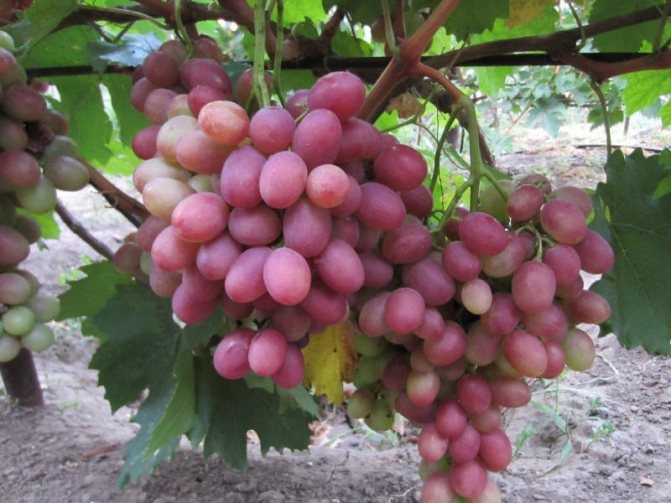

- They are well cleaned of needles by 4 centimeters. The bark is cut off.
- The cuttings are placed in a growth-stimulating solution for 24 hours.
- Cuttings are planted in prepared soil and shaded.
- A little more than a month (40 days), the root system will flutter.
- It is better to refuse watering, give preference to spraying.
- In July, the finished seedling can be planted in open ground.
- In winter, they are covered with spruce branches.
- Full rooting lasts about 3 years, only after that the seedling can be transplanted to a permanent place.
All manipulations with circumcision and cleansing are carried out only with a sharp and disinfected object.
It is practically impossible to grow a decorative juniper from a seed, it is better to use cuttings.
Best Time to Transplant: Spring, Summer or Fall
The timing in which a plant can be disturbed is dictated by the ability to form new roots. This ability changes with the season, so it is important to know when to replant your juniper.
The most favorable period for transplanting is early spring in March-April. Summer transplantation is not recommended, because in the heat, the needles are characterized by the appearance of a large amount of moisture on the surface. Then it is better to give preference to the autumn one - the plant will be able to take root in the spring. As for the Cossack juniper, the transplant can be carried out in the fall without fear.
Thus, the most favorable time for transplanting is spring. If, nevertheless, the juniper is transplanted to another place in the summer, then the following actions are recommended:
- dig up the plant and place in a container;
- carried in the shade in a greenhouse or just under a film, while the container can be buried in the ground;
- wait a couple of months until the plant gets used to the new conditions, while accustoming it to open air;
- plant a juniper at the end of summer in a permanent place, covering from the sun at first.
How to transplant a juniper from a forest to a site
Before transferring a young tree or shrub, pay attention to where it grows: in an open area or partial shade. This is a prerequisite for determining a site in the country. In order for the culture to take root, it is placed in the same conditions as in the forest.
Sapling digging rules:
- The boundaries of the root system are determined - the forest juniper forms the root and crown of the same volume.
- On the branch on the sunny side, make a landmark, you can tie a ribbon.
- Carefully dig in the bush to the depth of a shovel bayonet.
- Together with the soil lump, the seedling is placed on a cloth or polyethylene by the transfer method.
- Above the crown, a shipping material is tied and carefully pulled above the root.
Rules for buying seedlings
When choosing a juniper seedling, several nuances must be taken into account:
- Better to give preference to young seedlings with a closed root system, which were grown in spacious containers. But this does not mean at all that seedlings with open roots should not be purchased, it is simply believed that they take root worse.
- Having chosen the necessary plant, you should carefully examine it. The young tree should not contain any rusty or dry ends. The color of the juniper must correspond to the description of the variety, and the needles must be elastic. And also it is necessary to examine the root system. Acceptable root shades from light brown to yellow. The presence of damp and dark roots may indicate that it has recently been moved to a container. This can negatively affect the transplanting of the plant.
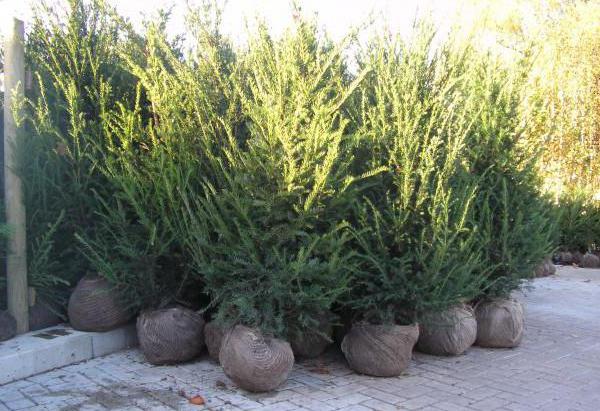

Pests and diseases of the evergreen
Forest juniper can overtake such diseases and pests:
- Rust. When it appears, the plant begins to turn yellow. For treatment, use a solution of Artsedir (50 grams per 10 liters of water).
- Schütte.
- The mold is gray.
- Juniper mining moth. For treatment, Decis is used (2.5 grams per 10 liters of water).
- Spider mite.The drug Karate copes well with the problem (50 grams per 10 liters of water).
- Juniper scabbard. Karbofos will help (70 grams per 10 liters of water).
- Aphid. Spray with Fitoverm (2 grams per liter of water).
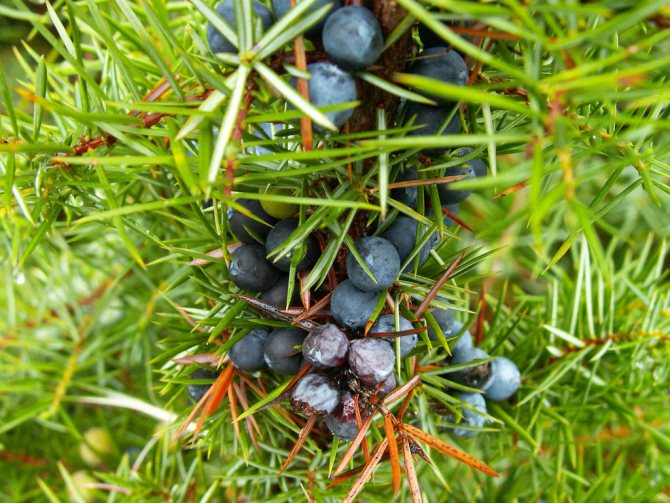

All these problems can be avoided if the plant is properly cared for, all tools are disinfected, and only high-quality soil is selected. If you find the problem early, then curing the tree will be quite simple and quick.
Soil preparation
Before planting a juniper, you must carefully familiarize yourself with the composition of the soil. After all, different varieties require certain trace elements, which may not be enough in your area. So, seedlings of ordinary, Central Asian and Cossack junipers prefer an alkaline composition. The rest prefer to grow in an acidic environment. To create the latter, the soil is mulched with sawdust or wood chips. You can fertilize the ground with sand and peat. To provide an alkaline environment, dolomite flour or slaked lime is used.
It is best to plant junipers where the sun's rays are most of the day, since there is a possibility that the crown of plants will darken from a lack of lighting, and the branches will slow down growth.
Experienced gardening tips
In order for the juniper to be transplanted from the forest safely, and the plant to take root in a new place, it is necessary to follow certain rules. The advice of experienced gardeners is based on previous mistakes, if you exclude them, the perennial plant will not only take root on the site, but also tolerate stress more easily.
Transfer and boarding rules:
- Work is carried out in the fall before frosts or in the spring, when the snow has not completely melted.
- Before removing the culture from the soil, a landmark is made on the crown from the sunny side; when placed on the site, polarity must be observed.
- Dig the seedling carefully so as not to damage the root, the width of the soil coma should not be less than the volume of the crown. If the earthen lump is too large and the transportation of the juniper is difficult, it is reduced in depth.
- The plant is transferred along with the root ball, it must not be allowed to shed. The forest juniper is completely placed in a plastic bag or wrapped in a cloth.
- The planting recess is prepared in advance; drainage and nutrient mixture must be placed.
- The size of the hole should correspond to the volume of the coma, voids should not be allowed, they are filled up and carefully compacted.
- The place is determined in partial shade. If planting involves an open area, daily sprinkling is necessary, forest juniper reacts poorly to low air humidity, especially in the first year of growth in a new place.
- It is undesirable to plant a forest juniper next to buildings, the branches of the plant are fragile, the descent of water or snow from the roof can cause significant damage to the crown.
- After planting, it is necessary to water with a growth-stimulating drug.
Attention! Do not allow fruit trees, especially apple trees, to be adjacent to juniper.
Apple trees provoke the development of rust, the plant after transfer is weak, the disease will develop within a few weeks, it will be difficult to save the forest juniper.
Juniper cut. Our partners
Juniper is a plant that not only possesses valuable medicinal properties, but is also widely used to decorate the garden. He, like many conifers, tolerates a haircut perfectly, and due to its slow growth, there is no need for its regular renewal. Such a beautiful and unusual object will decorate the site all year round. The variety of colors and possible shapes allows you to embody even the most creative ideas. Pruning juniper in the spring will make the bush or tree more aesthetically pleasing, but in order not to damage the plant, you need to do it wisely.
When to cut juniper
Conifers are much easier to handle in terms of shearing, such as fertile ones.There is no hard time for this: it is recommended to prune branches in any month of spring or in summer until mid-June. How a haircut will affect the growth of a juniper no longer depends on time, but on air temperature. It is desirable that it be at least 4 ° C.
What to look for
A plant such as a juniper, and without a haircut, can give the site a beautiful look. A haircut is necessary only for some of its varieties, the branches of which grow chaotically and erratically. Juniper trimming is used when they want to give the plant its own unique shape or when creating hedges (then they are trimmed several times a season). Some gardeners want to restrain growth in this way and make the bushes more compact. This is typical for shooting varieties such as Sky Rocket or Blue Arrow.
In this process, the main thing is to be careful. Before cutting, it is worth inspecting the plant for the presence of large branches that either fall due to their weight, or are noticeably knocked out of the crown. You need to cut them so that they lean to the side, but at the same time so that the plant does not remain bald. Some species, such as the Blue Chip, cannot be shaped and must be trimmed to remove dead, old branches and those that seem diseased.
How to properly prune junipers in spring
The rules for how to prune junipers in the spring are universal for many conifers.
For a haircut, you need to choose those specimens that are already a year old after planting in open ground. It is better not to touch those plants that did not survive the adaptation period well. Ideal for trimming are varieties that are familiar to the local fauna: they are acclimatized and perfectly tolerate artificial changes in shape.
To decorate the territory, it is not always necessary to choose very unusual, unnatural figures. It is recommended to adhere to the natural crown and only emphasize it by removing unnecessary branches.
A haircut is always stress for the plant, which can pull negative consequences. Therefore, it is recommended to remove 1/3 of the green mass. You can not leave bare branches, since the juniper does not have dormant buds, and they will not be covered with greenery again, but will simply fade.
Tools and means of protection
Conifers have unique, interesting properties, one of which is toxicity. Juniper is just that plant, the essential oil of which does not always have a positive effect on the human body. Pruning of Cossack juniper in spring and some other species should be carried out exclusively with gloves so as not to damage the skin. It is worth remembering that the resin of this plant is not washed off, which means that protective overalls or work clothes will also be needed. The tool (most often the pruner) must be sharpened well, cleaned and wiped from resin and oils several times during the cutting process.
Healing properties
Juniper is a very useful tree, especially woodland. Where it grows there is always fresh and clean air. Walking in places with such a plant, the head stops hurting, the mood rises, depression goes away, pacification comes, sleep is normalized. It is not for nothing that cypresses are planted in rehabilitation clinics, parks, sanatoriums and rest homes.
Since ancient times, various infusions have been made from cones and needles of plants. They helped fight diseases of the kidneys and genitourinary system. Decoctions are used to relieve skin diseases, eczema.
Essential juniper oil is gaining more and more popularity. It is able to cleanse the body of toxins and toxins. It also heals:
- Various skin diseases.
- Bronchitis.
- Osteochondrosis.
- Pneumonia.
- Influenza and colds.
- Viral infections.
It is useful to add a few drops to the bath. Thus, the body gets relaxation and the immune system is strengthened.
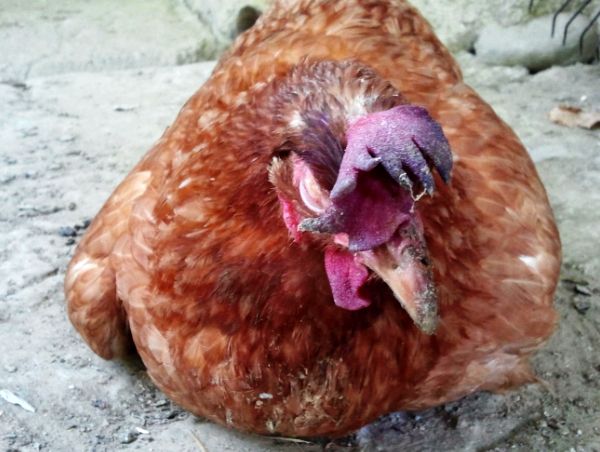

Previously, it was very common to find a juniper broom in a bath. In the old days, people went to the bathhouse to improve their health.
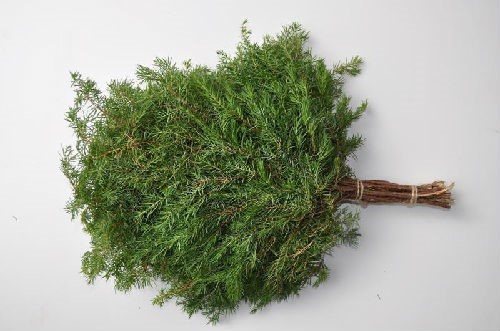

Moreover, the juniper is also used for magical purposes. There is a belief that brooms from this plant protect against damage, evil eye, slander and disease. Small brooms are hung around the house, and even in the barn with animals. Various amulets and charms are made from juniper.
A tree planted near the house can scare off ill-wishers and thieves.
When using the plant, you need to be extremely careful, since many varieties are poisonous. For example, Cossack juniper. It is easy to recognize, it does not grow upward, but spreads wide, its fruit has 2 seeds. The common juniper fruit has 3 seeds.
In any case, before using this plant, you need to consult a specialist. Self-activity can lead to serious health problems.
Juniper can be used as a seasoning for some dishes, for example, in the preparation of smoked meats.
Juniper essential oil - magical properties
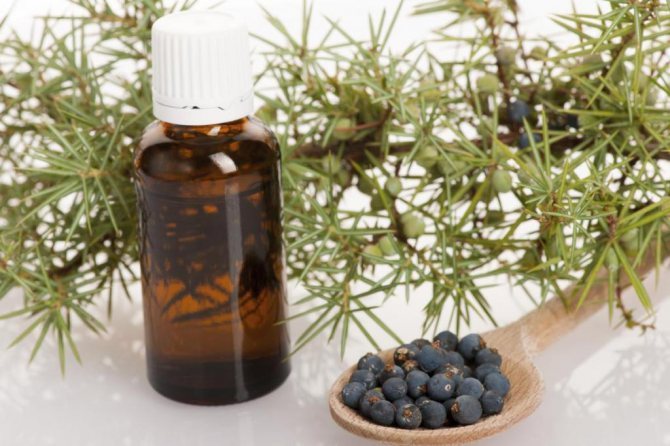

Ether gives a person tranquility, heals and protects. It is especially necessary for creative people, as it preserves the integrity of nature and the beauty of the soul. It enhances qualities such as nobility and loyalty. Helps to recognize lies. Protects against aggression and relieves internal irritation. Also, the magical properties of juniper essential oil lie in its ability to help in solving any complex problems.
With the help of the composition, it is possible to cleanse the room from negative energy. An aroma lamp is taken, a little oil is poured into a cup, a candle is lit, which will heat it up. Before the ceremony, the oil should be spoken in an arbitrary order, ask him to expel evil from the house.
The pleasant scent of juniper will remove evil spirits from the room. It will also cleanse the lungs and calm the nervous system. You can combine this method of purification with mantras or prayers.
The use of juniper essential oil in the composition of massage mixtures is very useful. Its properties are as follows: it relieves pain, cleanses and warms. It is actively used in mixtures for aromatic lamps and baths.
Gardening experience
A lot of necessary information on growing juniper can be learned precisely from the experience of gardeners. They recommend paying close attention to grooming in the first six months. Water the tree in time, fertilize, remove weeds around it.
If you want to get a not tall plant, you need to prune in the spring. Do it before new needles grow back.
Unfortunately, it is not so cheap to buy young seedlings. Therefore, it is more often practiced to transplant cypress into the garden from the forest. If done correctly, the process will be successful. The plant will not only delight with its beauty, but also bring undoubted benefits (therapeutic, preventive and sanitary and hygienic).
Process features
Very often, having acquired a young shoot in September, inexperienced gardeners are wondering how to plant a juniper in the fall so that it takes root successfully. This amazing tree can decorate any garden. And planting it is not difficult. Difficulty can only arise if an adult juniper was purchased. Outdoor planting and care doesn't really require any special knowledge. There is a certain technique, after learning which, transplanting in the fall will not be a hassle.
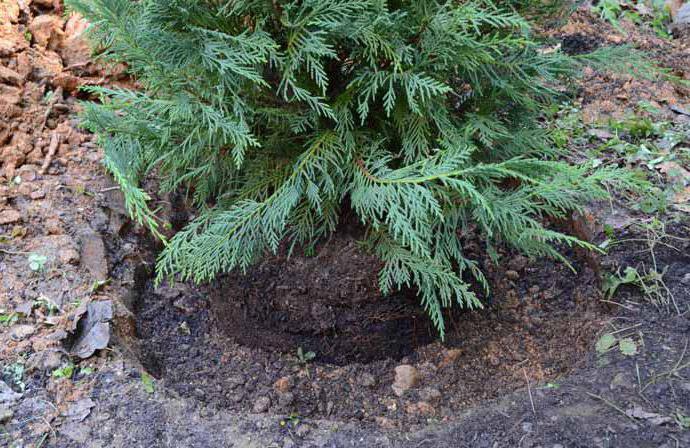

To begin with, the earthen lump should be well moistened. This will help you easily remove the juniper from the container. Transplanting in the fall consists of several stages:
- Dig a hole in a suitable location, approximately 60 cm deep. And in width it should be three times more than an earthen coma.
- Fertilize the planting hole. The vitamin mixture is prepared in proportions of 2: 2: 2: 1 (humus, peat, turf and sand, respectively). You can also add a universal top dressing specially formulated for certain varieties of juniper.
- The young shoot is carefully placed in the pit, while the roots should be placed horizontally, and then sprinkle the root system.
- Pour two buckets of water over the juniper hole.
- Add a layer of mulch soil to the settled soil.
As you can see from the above, there is nothing difficult in planting a decorative juniper. A transplant in the fall will provide the root system of the shrub with a sufficient amount of moisture, which is so necessary in the first months after transplanting.
Follow-up care
Despite the difficult survival rate, the juniper is a hardy plant that tolerates heat, low temperatures and severe drought well. It is unpretentious in leaving. Especially - planted out of the forest on the site. However, after transplanting, it is still worth giving the plant due attention.
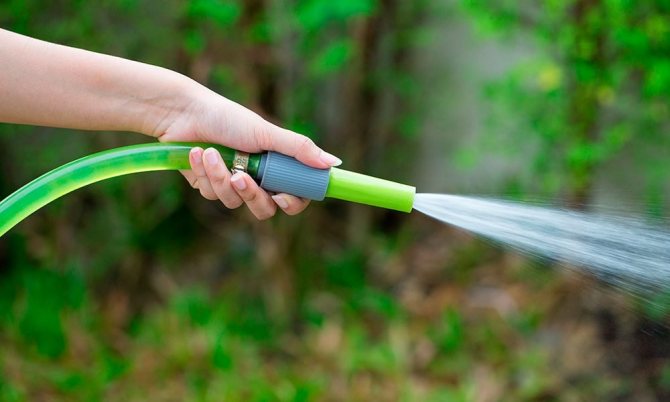

After planting a juniper in a new place, it is imperative to water the plant regularly: once every 7 days. The soil should always be moist, as the roots of the plant should grow strong enough. A plant cannot take moisture from dry soil. But after a year, watering can be stopped altogether.
In addition to root watering, it is recommended to spray the needles of the tree from time to time. The needles will acquire a richer color and become thicker. All this will have a positive effect on the aesthetics of the plant.
The juniper planted in the fall must be fed at the very beginning of spring. This will help the plant grow faster and improve its decorative qualities. Any polymineral complex can be selected as a fertilizer. Before applying fertilizer to the soil, you need to carefully read the instructions, carefully observing the indicated dosages. Juniper is very sensitive to excess fertilization, which does not have the best effect on its condition.
The transplanted plant must be covered for the winter. This is required to be observed for four seasons in a row. The branches are carefully tied to the trunk of the juniper. Make a wooden frame around the tree itself. And from above - cover with a film, pulling it over the frame. With the onset of spring, gradually remove the covering material so that the plant can adapt to the changed climate.
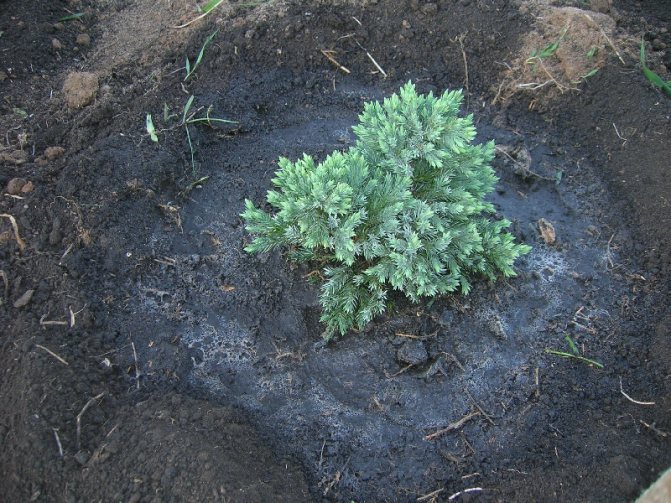

When transplanting a juniper, it is necessary to treat the plant with special agents against pests and diseases. Do the procedure until complete rooting, systematically. Foliar dressing, using macro- and micronutrients. When watering, you should avoid getting water on the trunk, leaves and roots, so that fungus does not occur.
Proper care for the next few months after planting a juniper in a new place is as follows:
- protection from the sun on the south;
- regular spraying of leaves;
- preventing drying and the appearance of a crust on the ground.
Compliance with all of the above rules will allow the juniper to take root in a new place sooner and better. The efforts spent on his transplant will not be in vain.
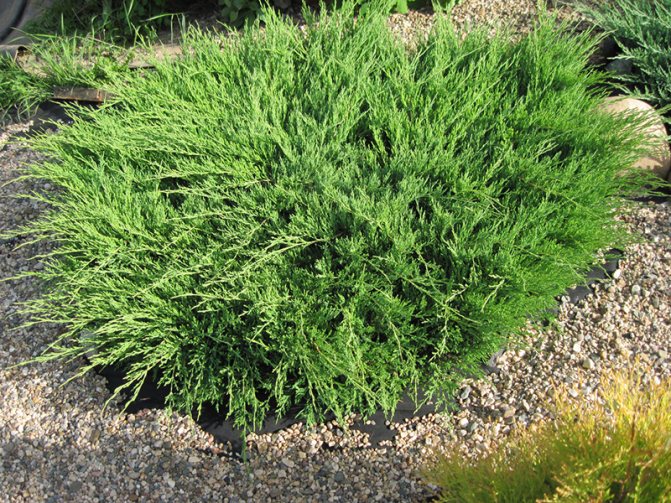

Juniper is a stunning, beautiful plant. It will not only make the garden unique. The essential oils of this tree have a delicate pine scent. The air saturated with juniper scent is good for health. Observing the rules for transplanting and caring for a plant described in the article, you can grow a beautiful, strong plant that will become a worthy decoration in your garden!
Top dressing and watering
Juniper is an unpretentious plant that does not require constant watering. In dry summers, it is watered 2-3 times a month. And also spray the branches with water using a spray bottle. This can be done in the evening or early morning, every two weeks.
You can fertilize juniper in spring with nitroammophos (about 45 grams per 1 m²). In summer, mineral or organic fertilizers can be used for fertilization once a month.
You can grow a great juniper. A transplant in the fall and proper care for it will help make your garden beautiful, and the air on the site - clean.
Many would like to see on their site evergreen and beautiful trees - junipers. Despite their decorative effect, they do not have to be looked after much. The real difficulty is the very moment of landing or transplanting. In this article, we will tell you when to transplant a juniper and describe how to carry out this procedure.

